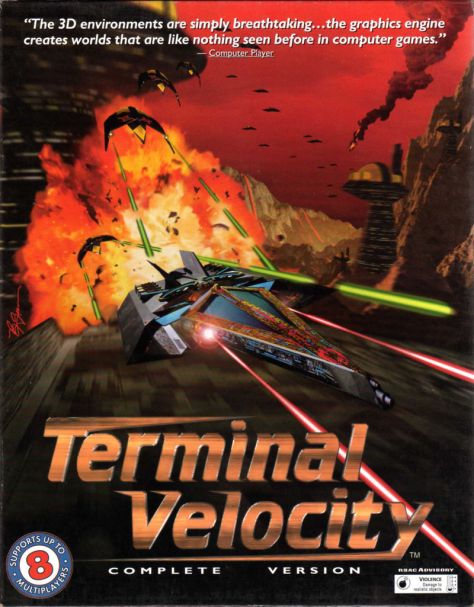There’s a joke (among many, countless others) in Monkey Island 2: as Guybrush is hanging over a pit of acid, you can make him ask LeChuck “why didn’t you just shoot me?”. And then LeChuck will reply, “because we had an extra disk”. Games have often struggled with available space, and multiple floppies or even discs were fairly common. Yes, even CD-Roms, with their 400X times the available space of a 3.5 incher, would sometimes not be enough.

Of course, the main culprit was the widespread use of FMVs. Cutscenes everywhere! Sometimes all of the game was a cutscene, like the ubiquitous Dragon’s Lair. But some games went further and used FMVs during the gameplay itself. Such is the case for on-rail shooters like Rebel Assault and Deadly Tide. The former is more famous, but the latter is fairly unknown. Let’s fix this.

Developed by Rainbow Studios and published by Microsoft (you can tell because they bothered to use DirectX 2 – no DOS here, they must have actually believed this could have been a Windows 95 killer app), it portraits humanity’s struggle against a race of underwaterish alien lizards. The aliens come to Earth during a long and expensive-looking intro cutscene that probably takes most of disc 1, and a few years later they have flooded the planet with some kind of space technology, or maybe they just waited until climate change did its job. Not really sure. Anyway, you get a prototype ship and bring the fight to their home turf.
It’s kinda Archimedean Dynasty, but with a lot less intrigues and a lot more aliens. Just kidding, it’s nothing like Archimedean Dynasty. It’s a rail shooter that uses FMVs as its very foundation. If you have played Rebel Assault 2, you know the drill: shoot at anything on the screen while the background kinda moves along. However, some sections even let you look around freely, and those are kinda surprising. I wonder what kind of technology it was – I can only guess that it must be something similar to what adventure games started to use a bit later.

Too bad those free rotating sections, while kinda impressive to look at, also offer the most annoying challenges. It’s not cool, being killed by an enemy outside the screen. Sometimes they even get above you! Often, during these sections, you can only learn where the enemies are before you die, and then use that knowledge on your next attempt.
To spice things up, you’ll occasionally face on-foot sections and even steal enemy ships. These intermissions are almost invariably a pain, since you’ll have far worse weapons at your disposal. Prepare to die a lot. Too bad, because the game overall isn’t that hard, and missions are short enough that retrying isn’t too much of a chore. But maybe they were trying to artifically make it last longer. Even so, it won’t last more than 2-3 hours.

Aside from the quite impressive rotating screens, there isn’t much worth remembering about this game. But it’s 4-discs jewel case, while not tremendously rare for the time, is at least a good shelf filler. Just like The 11th Hour, and that Zork Legacy box. And a few others. Imagine if digitl downloads hadn’t taken off, maybe now we’d have PC games on four or five DVDs. Unless Blu-rays somehow managed to become popular.
Ah, who am I kidding? Even if Blu-rays had become the norm, developers would have found ways to fill at least three of them. Maybe with a 4K remake of Deadly Tide?




